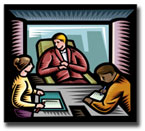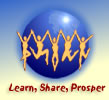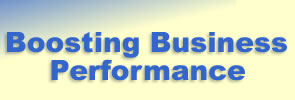Make Your Presentations Remarkable
Using a Needs Assessment
by Adele Sommers
What’s the “secret sauce” behind producing presentations and communications that corral the interest of your listeners, users, visitors, readers, learners, clients, or customers — and spur them to take timely and meaningful action?
Answer: You need a dependable way to impress your audiences and inspire them to respond! Their follow-up actions are the key — otherwise, why would you spend all of the time and energy to plan, prepare, and deliver your message? Is there any reason to leave the outcome to fate? Of course not!
That’s why a needs assessment is Step One in the systematic process of planning, composing, illustrating, and delivering a message that fits your audience like a glove.
So, what should your needs assessment entail?
A Needs Assessment Should Answer Several Key Questions
We often need to inform and persuade people for very important reasons. Those reasons might involve professional, educational, charitable, scientific, or any number of other important causes.
To plan appropriately, you’ll want to consider the purpose of your presentation, the intended audience, the outcome, and any downstream uses for your material. The answers can help determine how much time and effort to invest in the near term.
1. What’s the purpose, what’s at stake, and how critical is the result?
 For example, is the purpose of your message to: For example, is the purpose of your message to:
- Give a routine status update?
- Pitch a proposal or a project?
- Persuade people to donate to your cause?
- Present a study or research paper?
- Recommend a method or solution?
- Teach a class or give a lecture?
Routine status updates may not seem nearly as critical as courting a product sale, seeking proposal buy-in, or requesting project funding, for example. The need to make a strong, lasting impression increases with the importance of the occasion.
So what kind of “return on impression” (ROI) do you need to make?
2. What is your anticipated audience’s frame of reference?
Here, you’ll consider your audience’s perspective. What makes them tick?
One of your audience’s unspoken questions will be, “What’s in it for me?” This is exactly what you’ll need to determine to broadcast your message on station WIIFM!
Truly understanding your audience’s perspective will help you pinpoint the tone and degree of formality of your presentation. If the audience will be unfamiliar with your subject matter, you’ll want to consider how to bridge the gap between their frame of understanding and yours.
To do this, you can start by identifying a few fictional representatives of your expected audience, called personas.
 Personas reflect the characteristics of typical colleagues, customers, clients, or constituents to whom you will be delivering your message. Personas reflect the characteristics of typical colleagues, customers, clients, or constituents to whom you will be delivering your message.
You might want to select
a handful of these characters to research and profile in depth.
Think deeply about what they would need to hear — and how they would need to hear it — to become receptive to your ideas. Especially if the audience will be new to your ideas or terminology, you’ll want to research the following...
Demographically, will your audience include:
- Any particular generation, or a mix of age groups?
- Specialists within a specific industry, field, or discipline?
- People with specific entrepreneurial, academic, military, government, or corporate backgrounds?
- Executives, directors, managers, colleagues, or instructors in your own organization or institution?
- Political leaders or local government decision-makers?
- Members of a particular society or community?
- College students or other types of learners?
Psychographically, do they harbor certain beliefs, values, political views, buying patterns, and so on, that could help or hinder their ability to embrace your ideas?
3. What actions do you want your audience to take as a result?
 After they hear your presentation, do you want people to: After they hear your presentation, do you want people to:
- Endorse your proposal?
- Buy your products or services?
- Follow your recommendations?
- Approve funding for your project?
- Promote you or your organization?
- Contribute to your purpose or cause?
- Apply something they have learned?
- Take some other kind of action?
Be very specific about what you want people to do, which is your “call to action.” If you don’t have an explicit or implicit request of your audience, why not?
After hearing your message, your audience ideally will be fired up, or at least very curious to find out more. To help them take action, provide a means to do it before they turn their focus to other things. It might involve calling attention to a signup form, instruction kit, contact information, or an online platform where they can immediately take their next steps — while they’re still in the mood to do it!
4. Could your original concept later balloon into something more?
 For example, might you later expand or adapt your material to: For example, might you later expand or adapt your material to:
- Create a self-paced training tutorial?
- Produce an educational or marketing video?
- Develop a classroom-based training course?
- Design a product package, such as by bundling related reports, media, and other components?
Although each of these options will have different production requirements, it will definitely help to plan ahead.
For example, let’s say that you’re planning an in-person presentation, and you’ve determined ahead of time that you’ll want to use that event as a launching pad for a full-blown course you’ve developed on the same topic. With that in mind, you can aim to provide all of the signup forms, brochures, flyers, or whatever else you’d need to highlight your call to action. Make a point to strike while the iron is hot — when they’re still excited about what they’ve heard!
In conclusion, by routinely completing a needs assessment before you begin work on a presentation or communications project, you’ll powerfully boost your audience’s desire to consume and respond to your message. Each aspect offers another layer of clarity to help you whip up a recipe for success that you can continue adapting and reusing well into the future.
Copyright 2021 Adele Sommers
|


